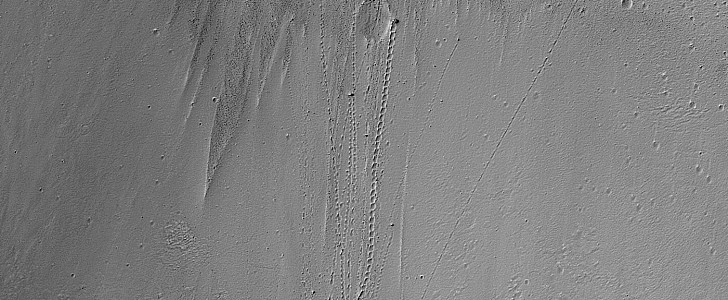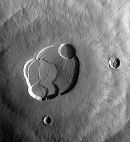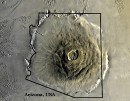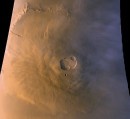Everywhere you look on Mars there’s a feature of some kind that to the human eyes, trained to see familiar patterns where there are none, looks like some sign of life. And what better example of that than the image we have here, recently released by NASA and the University of Arizona?
Most of you probably know by now how peculiar the neighboring planet is thanks to our coverage of the images sent back from millions of miles away by the HiRISE camera circling the planet on board the Mars Reconnaissance Orbiter. From shapes that look like animals to ones that give alien life optimists among us reason to hope, there’s no shortage of miraculous vistas coming our way.
The particular image we’re here to explain today shows a portion of a crater in an unspecified region of the planet, a dusty place like pretty much all other places there, but one dotted by what seem like tiny footprints coming down the slope.
If you look closely enough though, the secrets of this image get revealed. First of all, it’s upside down, meaning the alleged footprints start at the bottom of the image and move up. At the opposite end, there’s a small protuberance that explains the entire picture: a boulder.
Originating from what NASA scientists call “one small part of the crater wall that is less stable than surrounding materials,” the boulder was sent down the slope by unspecified forces, bouncing up and down and creating the footprint-like features.
People studying the image (which was captured by HiRISE all the way back in 2014 from an altitude of 261 km/162 miles) say this region must have had “been numerous rockfall events” over the years, “as suggested by the many boulders down-slope of this area, some with clear tracks and others with indistinct or no tracks visible.”
The biggest boulder we know of that was sent on its merry way there measures some 6 meters (20 feet) across, quite the mammoth by Earth standards.
The particular image we’re here to explain today shows a portion of a crater in an unspecified region of the planet, a dusty place like pretty much all other places there, but one dotted by what seem like tiny footprints coming down the slope.
If you look closely enough though, the secrets of this image get revealed. First of all, it’s upside down, meaning the alleged footprints start at the bottom of the image and move up. At the opposite end, there’s a small protuberance that explains the entire picture: a boulder.
Originating from what NASA scientists call “one small part of the crater wall that is less stable than surrounding materials,” the boulder was sent down the slope by unspecified forces, bouncing up and down and creating the footprint-like features.
People studying the image (which was captured by HiRISE all the way back in 2014 from an altitude of 261 km/162 miles) say this region must have had “been numerous rockfall events” over the years, “as suggested by the many boulders down-slope of this area, some with clear tracks and others with indistinct or no tracks visible.”
The biggest boulder we know of that was sent on its merry way there measures some 6 meters (20 feet) across, quite the mammoth by Earth standards.






